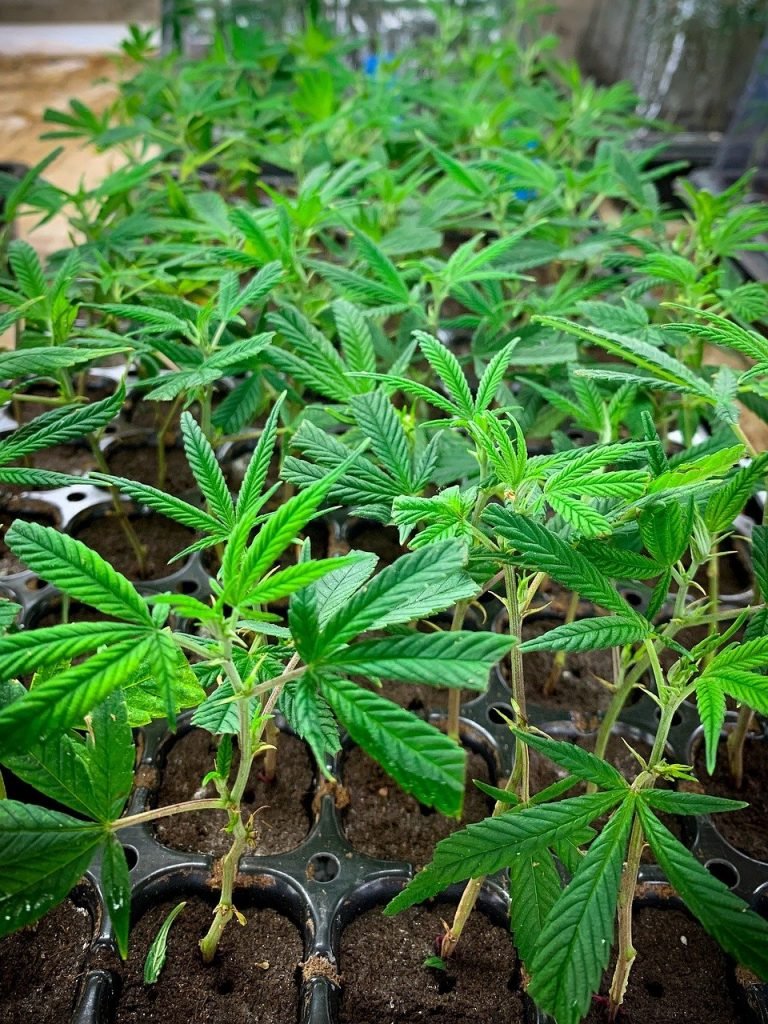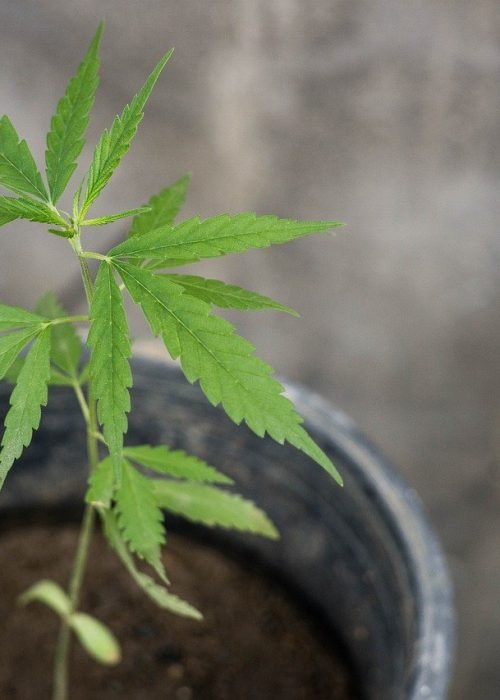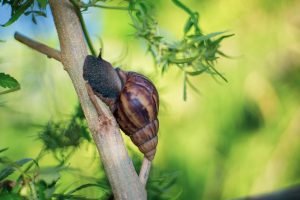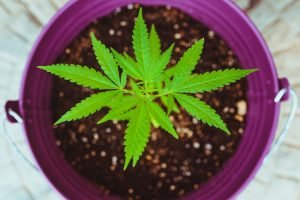Propagation
Propagation
Propagation, otherwise known as cloning, is the process of taking a clipping from a grown cannabis plant (the mother plant), and then growing that into a fully grown plant.
Clones are a good option for those who don’t want to germinate from a seed, and it can save you a few weeks of growing. For those who do not wish to grow from a seed, clones can give you a bit of head start in the growing process.
Clones are taken by taking a small clipping of another cannabis plant, one that is currently in the vegetative stage, and then placing the clipping into some form of growing medium, such as a root cube. This will help the clone to develop a root system in order to then transplant it into a larger pot or in the ground.


The clone will then grow and develop and share the same characteristics as the mother plant. This can be both a good and not so good thing. The good thing about clones is that as they share the same genes as the mother plant, if the original plant has great tasting buds, aromas, effects, or is a strong grower, then the clone will likely develop in much the same way. If you have a favourite strain, then taking from the clone means you can get the same taste again.
The downside of clones is that, as they share the same genes, they will also share any negative issues that the mother plant may have. This could include pests, disease, or weak branches. If the mother plant is susceptible to disease, the clone may be too.
What to look for in a mother plant
When taking a clipping from a mother plant, you must ensure that it is in the vegetative stage of growth and has not yet started to flower. Taking a clone from a plant that is in the flowering stage could damage the mother plant and the clone may end up being hermaphrodite (both male and female).
The mother plant must be healthy before taking a clone. If it is weak growing or has disease, then the clone will be the same. When picking a mother plant, as well as it being strong and healthy, pick one that has grown well before. Perhaps you really enjoy the effects or taste of a particular flower. Taking a clone from this plant will ensure a longer supply of your best stuff.
Some growers keep a mother plant just in the vegetative stage, solely to produce further plants that will grow to full maturity and produce flowers, or buds. This can be a little more costly and time consuming and will depend on how dedicated you are to growing.
To ensure a lasting supply, many growers will take their clones when the mother part is in the vegetative stage, and then initiate the flowering stage of the mother plant, whilst starting to grow the clone at the same time. When the mother plant flowers, the clones will be ready to take another clipping from them, and the cycle continues. Keep in mind though that some clones will degrade in quality over time.

How to take a clone from your cannabis plant
You will need to prepare a little before taking a clone form a cannabis plant. First of all, make sure you pick a nice and strong mother plant. It should be healthy, sturdy and without disease or pests. The mother plant should also be at least 8 weeks into the vegetative growth stage but not yet starting to flower.
Before you take your clone, do not use any fertiliser on the mother plant for a few days prior, to allow the nitrogen to flow out of the leaves. If there is still a lot of nitrogen in the leaves when you take your cutting, the clone may put energy into growing vegetation, rather than a root system.
You will need to make sure you have a good pair of scissors for cutting, a razor for cutting up the trimmings, and a root cube or something similar to start your clone in.
If using a rooting cube, you will also need a cell-tray in which the cubes will each sit in, and then another tray filled with water for the cell-tray to sit in. A dome over this will also help to keep in humidity. You will also need some rooting hormone to get your clone off to the best start. It is also a good idea to use sterilised equipment and a pair of gloves, to keep the environment clean.
When taking your cutting you will want at least two nodes on the clone, and it should roughly be around 6 inches long. Pick a branch that is strong and healthy.
Cut off the clone just above the node of the mother plant, using sterilised scissors. Then take a razor to your cutting and cut just under the bottom node of the clone, at a 45-degree angle. This will help the root system to develop faster.
Put your cutting straight away into the root hormone mixture and then into a rooting cube. To help your clone take up as much water and nutrients as needed, you will want to remove some of the lower leaves at the bottom and clip the tips of any fan leaves on the clone.
Keep your clones moist and keep a good eye on them. If any have been damaged and have not grown, then remove them to give the other clones more space to grow.


When to transplant your clone
Your clone should be ready to transport into a larger container, or directly into the soil in around 10 to 14 days, give or take. The roots of the clone should be about 1-2 inches long. Be sure to wear gloves and keep the environment sterile to give your clones the best start and to avoid transplant shock.
Make sure the soil you are putting your clones into has already been watered and drained, to give more stability for your little clone. Gently place it in the soil, digging out a hole about 1-2 inches deep, or enough to cover the roots. Cover back over with soil.
Latest growing blogs

Tips for Growing an Indoor Cannabis Garden
If you are heading into winter where you are, or simply want to be discreet about your cannabis plants, then read this article on how to get up a grow space indoors.

How to Grow a Cannabis Plant and Harvest It
For those of you who are new to growing, take a read of this handy guide to give you the basics of starting your first cannabis plant and then harvesting it.

Structure of the Cannabis Plant
You may have heard many terms floating around such as trichomes, nodes, cola, but what do they all mean and what part of the cannabis plant are they referring to? I

What Are Cannabis Terpenes?
There is a lot more to cannabis than you may think, and it is actually made up of many different compounds and terpenes, but what exactly are terpenes, what do they do, and do they get you high?

How Long Will Your Buds Last from Growing 1 Cannabis Plant?
As of the 31st of January 2020, residents in the Australian Capital Territory are allowed to grow up to two plants per person or four per household. This has got many people trying out growing their own cannabis themselves for the first time.

Everything You Should Do Before Growing Your Own Weed
If you live in an area where it is legal to grow your own cannabis plants at home, you may be wondering were to start. This quick article gives a guide as to what to think about before you start growing.

Tips for Growing Cannabis Outdoors
Growing your cannabis outdoors, under the sun and other natural elements, is a much more organic and traditional way to garden. Here are some tips to help you get the best out of your grow space.

How to Get Rid of Slugs and Snails on Your Cannabis Plant
For any gardener, pests are frustrating when you have taken the time to lovingly care for your plants. When growing outdoors, it is likely that at some point, you will encounter some type of annoying pest.

How to Grow Your Cannabis Faster
For many of you who live in places where you can now grow your own cannabis plants at home, you may be wondering the best ways to grow and how you can harvest faster.

Our deep love of plants and fascination with Cannabis has enabled over 25 years of successful small scale Marijuana cultivation from indoor hydroponics, greenhouses and outdoor growing set-ups.
As Cannabis laws around the world change, *we support the movement toward freedom of choice for responsible, consenting adults who wish to experience the joy and wonder of growing a Cannabis plant.
